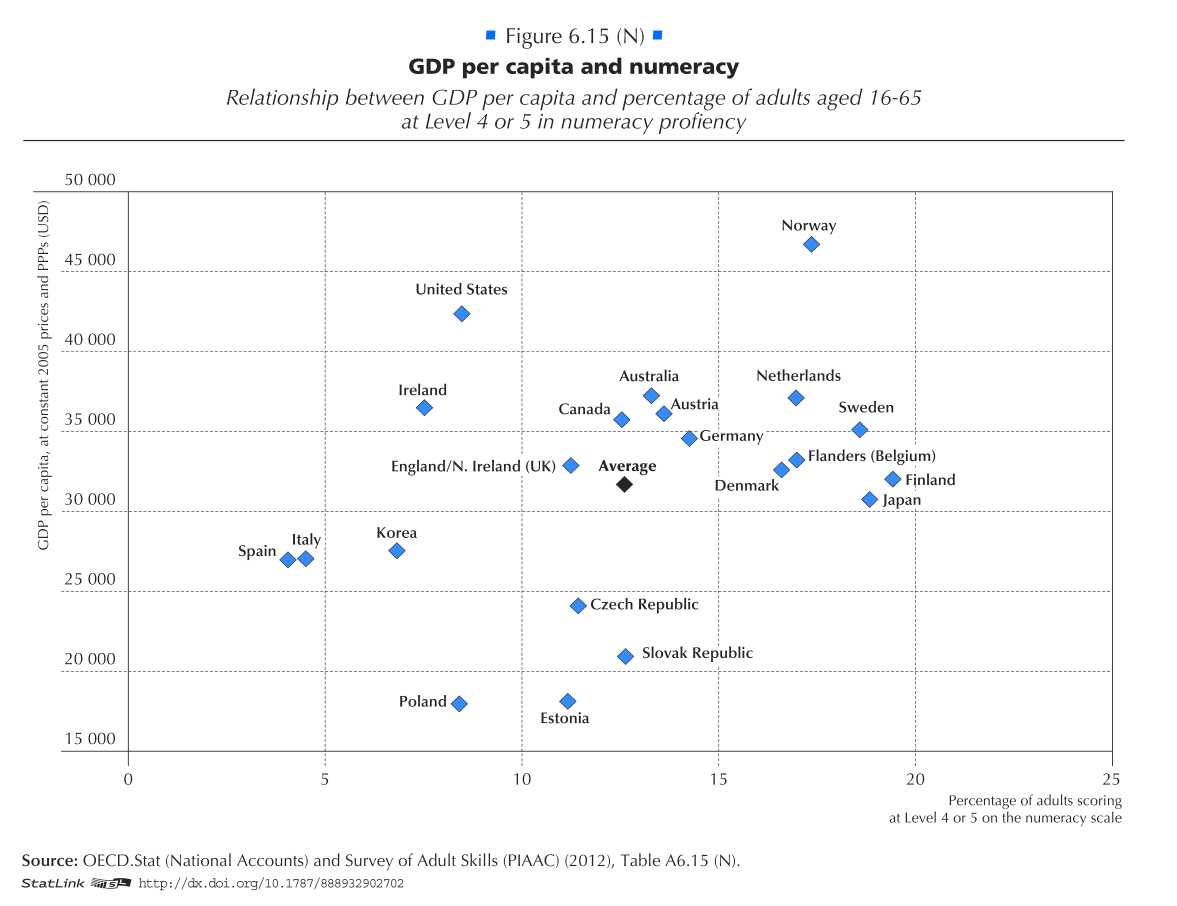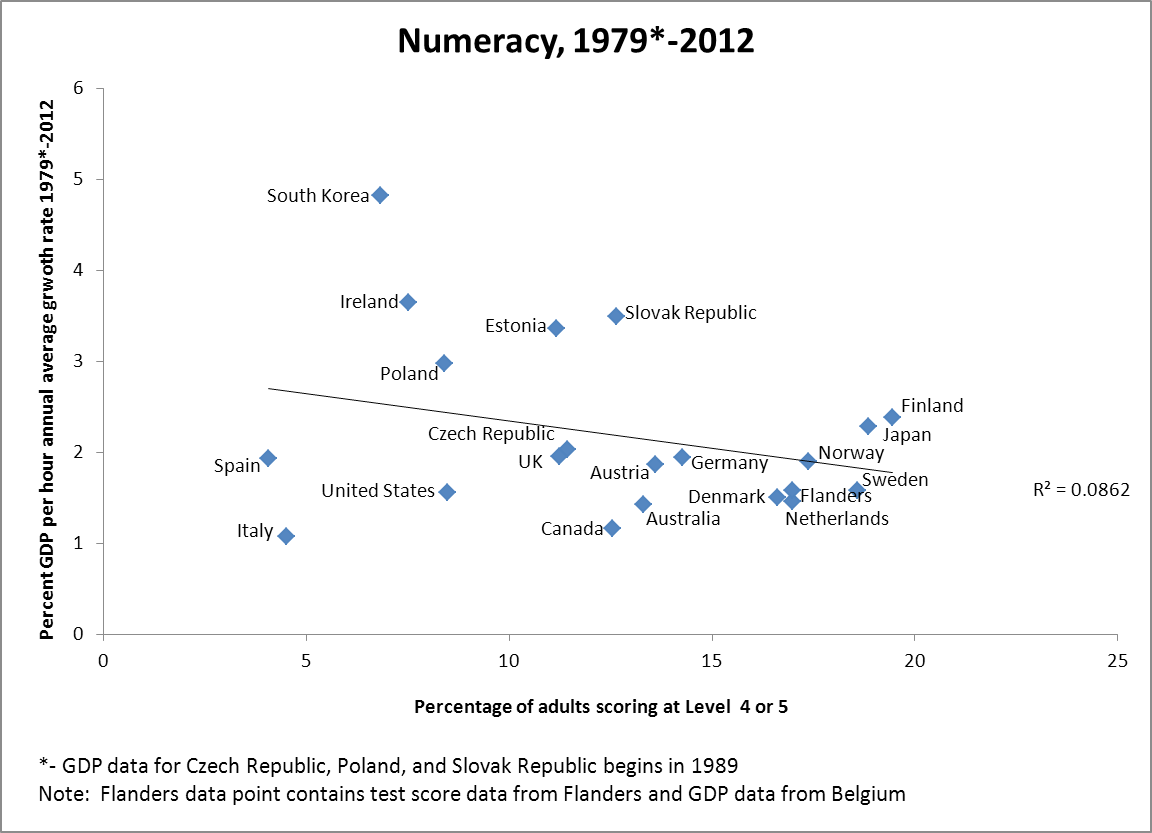November 25, 2013
The OECD recently released an enormously useful 466-page report(pdf) on labor-market skills in its member countries. The document is the first of what will be an annual series of OECD Skills Outlook reports, in the style of the organization’s regular Employment Outlookand Economic Outlook publications.
The report is packed with helpful data on educational attainment and skills levels (as measured by standardized testing) in 24 countries. I have not made my way through the whole document, but I wanted to make one point that is important to keep in mind if you do give it a read.
While it is natural that an analysis of skills would focus on skills and education, I’m concerned that readers might be left with the impression that skills are the only or even the overwhelming determinant of a country’s standard of living. The report, for example, states that skills “drive economies” (p. 26), that “countries with lower levels of skills risk losing in competitiveness” (p. 27), and that a shrinking national talent pool “could imply a decline in the relative [national] standing.” (p. 31)
But, as one figure out of a total of more than 300 tables, figures, and boxes in the report indicates, the relationship between skills and national output (measured as GDP per person) is, in the OECD’s words, “weak” (p. 244). Here is the OECD’s graph, which shows no obvious pattern between skills and GDP per capita:
Source: OECD, 2013.
Moreover, the direction of causation is not at all clear. Higher skills may help to boost GDP per person. But, it may also be that income drives skills, with richer countries having more resources to invest in education and training. In any event, in the United States, where we tend to see education as the solution to nearly every social and economic problem –and it certainly is very important– the loose connection between aggregate skills and aggregate economic output may be surprising.
What is potentially even more surprising is that high skill levels don’t appear to have any impact –in the cross-country data, anyway– on growth over time in GDP per hour worked, also known as labor productivity, the main long-run determinant of a country’s standard of living. The Skills Outlook did not produce a figure showing productivity growth against their skills measure, but I’ve taken data on the growth between 1979 and 2012 in output per person and graphed it against the same OECD skills measure used in the figure above. (Thanks to Teresa Kroeger for compiling the data and preparing the figure.)
Source: CEPR analysis of OECD and GGDC data.
Over the period 1979-2012, the data show a negative (statistically insignificant) relationship between the OECD skills measure and the growth in GDP per hour worked. Now, I doubt that higher skills actually depress growth, but it is clear that a lot more than skills is at work here.
Every country in the world would benefit from improvements in education, training, and the skills of its workforce. But, skills are, by a long way, not the only determinant of national income. Other factors include private and public infrastructure, national competitiveness policy, environmental constraints, the quality of labor-market institutions, including those that support combining work and family responsibilities, and many others. Recent research also suggests that the distribution of income may have an important influence on growth, with high levels of inequality suppressing growth.








